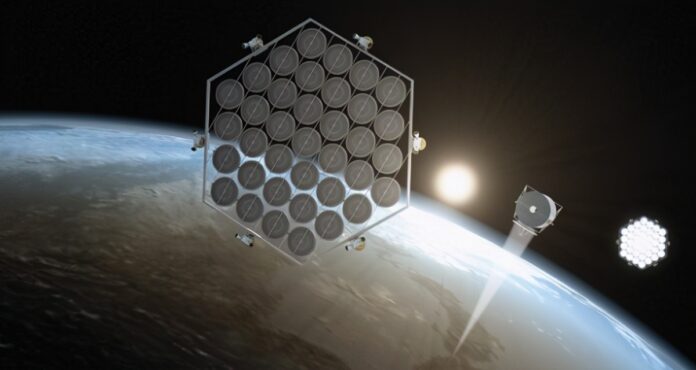Back in 2013, a billionaire provided a $100 million donation to Caltech to develop solar power generation in outer space that could be beamed down to Earth. Caltech has been working on a solution for the last eight and has worked out the materials, environmental and safety challenges in producing a yet-to-be-deployed prototype that includes a space-deployed solar collector and the wireless long-distance power transfer to one or more sites on the planet’s surface. In 2017 a prototype was launched which collected solar energy and transmitted it to Caltech. A later prototype added power beam steering and improvements in weight and design. Caltech, if successful, believes it will be another six years before commercial deployment of energy from space becomes a reality.
It’s an idea born from science fiction writer, Isaac Asimov, who described space stations transmitting solar energy to Earth using microwave beams back in a 1941 short story. And since the 1970s various subborned attempts have been made to turn Asimov’s fantasy into a reality. That includes work done by Japan’s space agency JAXA and the US Naval Research Laboratory.
In 2014 the US Department of Energy described what microwave transmission of energy to Earth would look like. It would involve satellites in geostationary orbit (GEO), 35,000 kilometres above the Earth. The solar reflectors would span up to 3 kilometres and weigh more than 80,000 tons. Each would generate multiple Gigawatts of power or enough to sustain a large city.
The microwave wavelengths used would long antennas, which would allow power to be beamed at low intensity to receiving stations regardless of atmospheric conditions. The intensity of the microwave beams would be no stronger than the midday sun allowing birds and airplanes to flying through them. The receiving antennae to collect the microwave beams would cover a large area of land. It was estimated anywhere between 3 and 10 kilometres in diameter.
In 2014, the estimated cost of launching, assembling and operating one of these satellites was estimated to be tens of billions of dollars requiring scores of material supply missions from Earth. At the time, there was no consideration of using space-based materials in the building of these geostationary satellite power arrays.
Currently, a British company, International Electric, has its own plans to beam power to Internet-of-Things (IoT) devices equipped with high-gain antennae for receiving power from a phased array, called CASSIOPeiA.
Now China is entering the field with plans this year to complete the Bishan Space Solar Power Station near Chongqing in an attempt to wirelessly collect energy beamed from a high-altitude balloon with a suspended floating solar array beneath. This test, if successful, will lead to a fully working small-scale power station and satellite to be deployed by 2030, and the ultimate goal, to harvest Gigawatts of energy from space using microwave power transmission.
So it appears we are witnessing another space technology race that could prove to be a zero-emission solution to end our reliance on fossil fuels for the bulk of our energy needs. Maybe, the latest IPCC Climate Assessment will hasten the research and development for these projects. It would be the ultimate solar energy solution with no intermittency issues whatsoever. What a game breaker that would be.
















